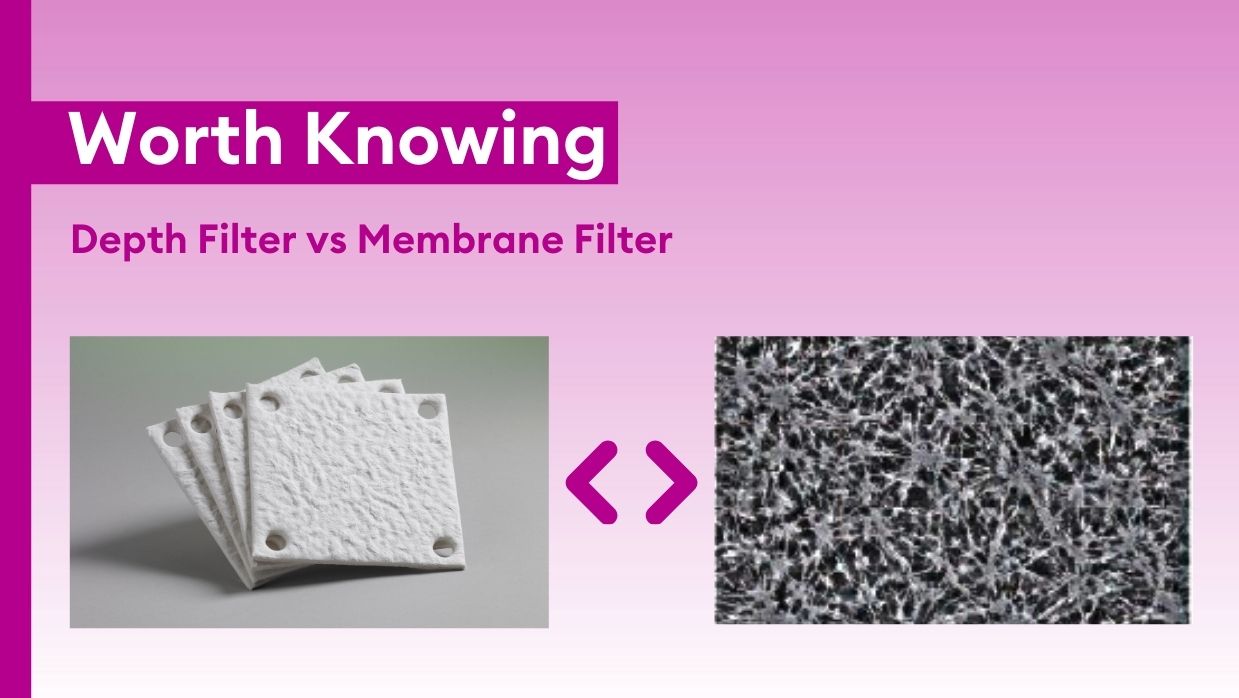Do you know the difference between depth filters and membrane filters, and do you feel confident
about their use and application in your filtration process?
We will be happy to provide you with the appropriate technical and scientific support on this issue.
What do you need to know about Depth Filters and Membrane Filters?
Functionality of Depth Filter and Membrane Filter
- is fundamentally different
- accordingly, an application-specific use must always be evaluated
Depth Filter
In this article, we refer to depth filters whose main component is cellulose and not polypropylene or
glass fibre.
They have a filter thickness of approx. 4mm as a single-layer version or 8mm in the double-layer
version.
In the laboratory, they are initially tested with 47mm discs until they are finally used in production in 16"
modules/capsule design or as filter sheets with up to 1200x1200mm.
The main advantage of this product:
- large inner surface area
- high dirt holding capacity
- if necessary, available loading capacity
The manufacturers of such depth filter media have the appropriate products in their portfolio for different pharmaceutical processes.
It is by no means easy to compare different manufacturers due to the undefined absolute retention. Tests with a downstream membrane provide information on the performance of the product. If this is not possible, filtration parameters should be used to compare different products.
We at vipur are happy to support you with our decades of expertise and filtration equipment in this area.
Membrane Filter
Membrane filters, on the other hand, are so-called surface filters with almost no dirt holding capacity, i.e. they block up quickly under load.
The main advantage of this product:
- regulatory retention definition in relation to defined germs
- can be tested for integrity using a filter test device
The scalability of membrane filters is very large for almost all suppliers and ranges from 25mm syringe
filters to 30" filter elements/capsules.
The most common membrane materials are PES (polyethersulfone), PVDF (polyvinylidene fluoride) or
PTFE (polytetrafluoroethylene).
It is very easy to compare different manufacturers due to the defined retention. The most common test
method used here is the so-called Vmax test.
What Depth Filters and Membrane Filters teach us
Depth filters have a very high dirt holding capacity and should protect the downstream system as well as possible when used as a pre-filter.
Membrane filters are pure surface filters and can therefore only be used for the filtration of media that have already been treated accordingly. Their retention rate correlates with the bacterial load. They can be checked for integrity using a filter test device.
Would you like to know more? We will be happy to provide you with detailed information on the subject of "Depth Filter versus Membrane Filter" for download on our website.
See you next time - we look forward to further filtration.
Have a nice day,
the vipur Team
